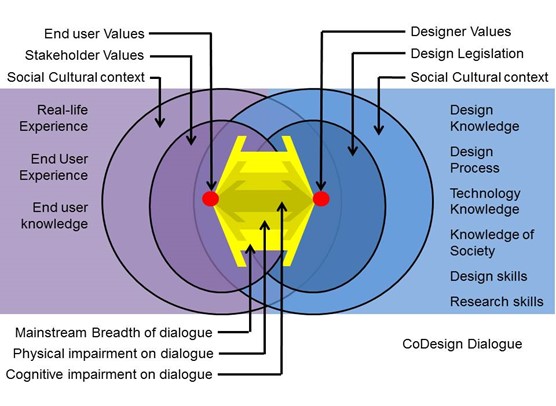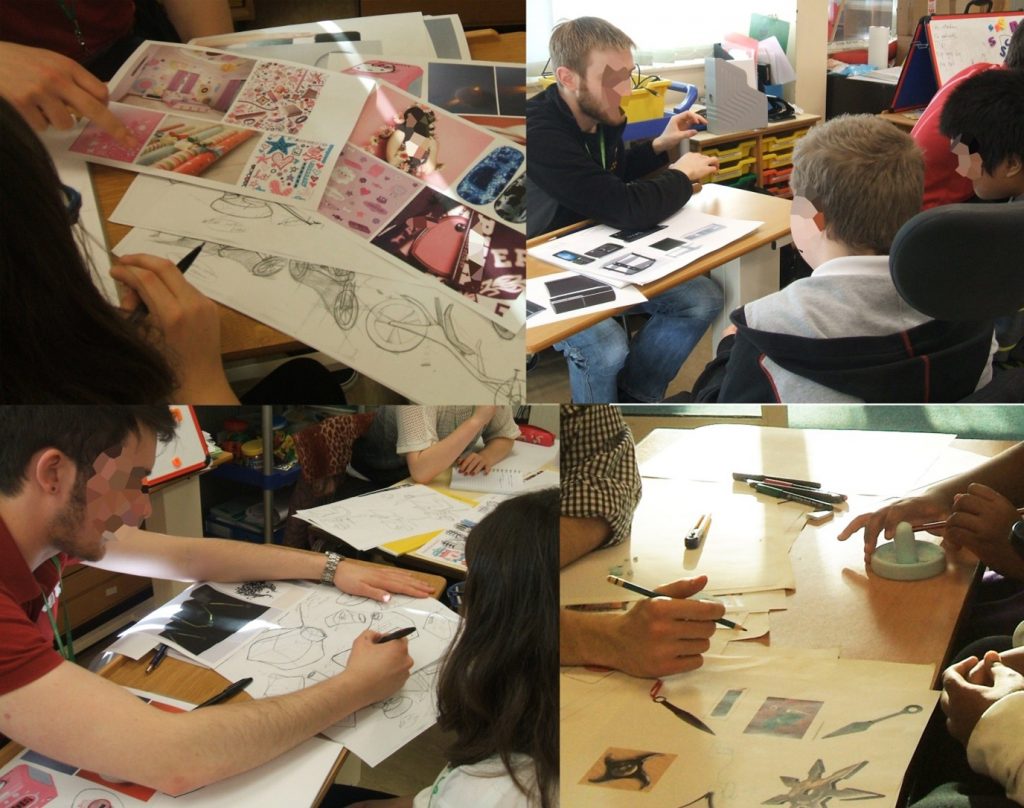Co-Design, co-creation or participatory design are all approaches to involving the end user in a specification and product design process. Co-design is a form of participatory design activity, originating from a systems engineering approach; in this case, it refers to a one-to-one design activity with the designer. It is also known as co-discovery, (Kemp 1996).
Key elements of co-design are:
- Defining your target market;
- Identifying socio-economic and cultural context;
- Identifying a representative end user of your target market;
- Defining an appropriate language and terminology between user and designer co-designers.
Dialogue is key to building trust and a common understand of user needs (functional) and aspirations (social and cultural function, values and affordances).
Icebreaking exercises before any co-design activity can enable a designer to be introduced to the end user and the user’s context of social, cultural and economic daily living, as well as their language and terminology.
Designers can use the following ways in which to communicate with end users involved in a co-design process:
- Verbal/spoken;
- Visual/sketch/diagram/mood-board/scenario-storyboard;
- Haptic/model/prototype;
- Role play/dance/movement; and,
- Olfactory/taste/smell.
Physical or cognitive impairment through disease, injury or environment (physical or cultural) will reduce the range of options or ‘band-width’ within which to communicate.


Useful links
Albinsson, L., Lind, M., Forgsefren, O., 2007. Co-Design: An Approach to Border Crossing, Network Innovation.
Kemp , J.A.M., and van Geldren, T., 1996. Co-discovery exploring: An informal method for iteratively designing consumer product. Usability evaluation in industry, (eds.) Jordan, P.W., Tomas, B., Weerdmeester B.A., and McClelland. I. L., Taylor & Francis, London.
Sanders, E. B.- N., Stappers, P.J., 2008. Co-creation and the new landscapes of design, CoDesign, International Journal of CoCreation in Design and the Arts. (4), 1 Taylor & Francis: London. pp5-18
TORRENS, G. and BLACK, K., 2011. Equipment design in inclusive physical activity and disability sport. IN: Roibas, A.C., Stamatakis, E. and Black, K. (eds). Design for Sport. Farnham: Gower, pp. 153-178. Available at: (https://dspace.lboro.ac.uk/dspace-jspui/handle/2134/9025), [Accessed: 22/09/2015]
Torrens, G. and Newton, N., 2013. Getting the most from working with higher education: a review of methods used within a participatory design activity involving KS3 special school pupils and undergraduate and post-graduate industrial design students. Loughborough University. Available at: ( https://hdl.handle.net/2134/14858 ), Accessed: [21/01/2021]
Torrens, G.E., 2017. Dialogue appropriate to assistive technology product design: A taxonomy of communication formats in relation to modes of sensory perception. She Ji: The Journal of Design, Economics, and Innovation, 3(4), pp.262-276. Available at: (https://doi.org/10.1016/j.sheji.2018.01.001), Accessed: [21/01/2021]
